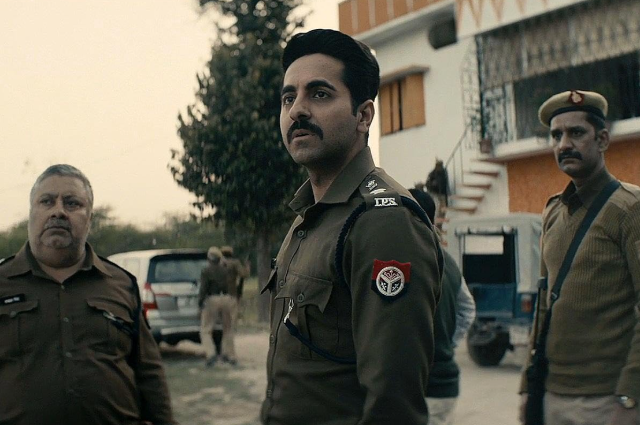It showcases the true reality of the villages in India and how age-old practices and norms continue to affect the society, apart from this it also highlights the structural challenges in the law enforcement of the country.
The movie is inspired by the 2014 Badaun case. The film revolves around the murder and rape of three young Dalit girls in India by a politically important man and how the police works in the favour of people who are in power, failing to deliver justice. The movie also highlights the problem of strict caste hierarchy and how some people are still treated horrifically just because they are born into a particular caste.
Article 15 showcases the horrific realities of the caste system in India, especially for those people who believe this hierarchical division of society holds no relevance in the modern day. The movie doesn’t just showcase how some people are discriminated it also talks about the fact that their ill treatment is so normalised in villages.
Our constitution does law down provisions that prevent ill treatment on the basis of Caste and promotes equality in the society but in reality is it really followed?
Two girls are murdered, and one goes missing, but no one pays any heed to it. Why? Because Dalit girls going missing isn’t just a crime- it's background noise.
The local police officer who is supposed to deliver justice jokes about caste and shows no concern for the victim. A person is beaten up brutally for his “ crime” of entering a temple as Dalit man, the people from “ lower” caste doing inhuman jobs like cleaning a sewer without gear or protection, children literal kids refusing to eat food made by a teacher because she is a Dalit; all of these scenes show the heartbreaking reality of Indian villages.
And not to forget the economic exploitation of these people. The movie shows how the girls were killed and gang-raped for asking a 3 rupees increase in their daily wage, three Rs. In a world where one does not even get bottled water for that price, they were killed brutally for taking a stand for themselves and not just that, they hanged them on a tree to showcase other people, what happens when someone from “ lower” strata of the society tries to step out the line.
One of the other important messages from the movie is the realities of law enforcement and loopholes of the police service in the country.
The lack of empathy & indifference by the police explains a key structural rot in the system. This, unfortunately, showcases the broader reality of the police service of the country: officers are not concerned about creating a difference in the life of the people who plead for help, and the Worst part is that the system allows it! It allows them to be indifferent. There are no consequences for their inaction. Imagine some parent coming with a complaint of a missing daughter, but the police show no help. They know about the horrifying crime & yet they refuse to investigate. They aren’t shocked by such horrifying crimes; it's all normal for them.
The line from the film ‘we don’t interfere, we adjust’ tells how the police force is not structured to challenge injustice, it’s structured to live with it. Instead of working for the welfare of common innocent citizens, they prioritise loyalty towards political superiors.
The police constantly shows their obedience & loyalty to party in power because their career and survival in this space is dependent on staying in the good books of those people in power. The movie beautifully shows how political interference protects those in power instead of those who suffer. It shows that political interference has turned police work into a parody, where justice is only reserved for people who are already at the top.
Even if someone like the IPS officer in the film tries to actually work on delivering justice even if it means challenging the authority who have unchecked power — The system won’t let them survive — either they will transfer them, suspend them or create false charges.
India’s law enforcement is equivalent to a clown’s circus at this point, where there is a greater focus on prioritizing maintaining files & documentation over actually delivering justice. It’s like the system is built to look like it’s working when it’s not. Paper work is more important than investigation & probing the matter because actual work demands accountability. In the film, too, when the girl goes missing, the policemen are more concerned with registering the FIR over taking action, and if an honest officer does his duty, they try to convince him that the girl just ran away.
Article 15 also showcases the true picture of the Indian society, a society which still hasn’t come out of age-old disastrous practice of hierarchy. The inefficiencies, misplaced loyalties and procedural obsession of police in India — due to which thousands of innocent people struggle to attain justice.

